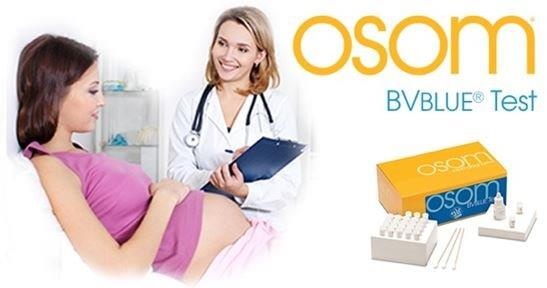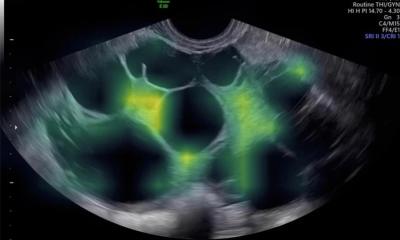Sponsored • Innovative test
Diagnosis of bacterial vaginosis
Bacterial vaginosis (BV) is a common infectious disorder that affects millions of women worldwide. Women of all ages are at risk for BV and its complications, which include a greater susceptibility to sexually transmitted infections (STIs) such as herpes simplex virus and HIV.
Visit Sekisui Diagnostics at ECCMID 2018:
Clinical Information
BV is the most common cause of infectious vaginitis. Normal vaginal flora is dominated by lactobacilli. In BV, the lactobacilli are replaced by mainly anaerobic microorganisms such as Gardenerella vaginalis, Bacteroides spp., Prevotella spp., and Mobiluncus spp. These bacterial pathogens responsible for BV infection produce sialidases, which are enzymes that cleave sialic residues in oligosaccharides, glycoproteins, and glycolipids. Studies have shown increased sialidase activity in the vaginal fluid of women who have BV.1
Diagnostic Methods
Diagnostic testing for BV should be accurate, timely, and cost efficient. Available testing approaches each have advantages and limitations. Current methods differ mainly in their sensitivity, turnaround time to results, ease of use, cost, and their ability to be performed in a variety of treatment settings, including a physician's office, clinic, or other point-of-care setting. The four main methods for diagnosing BV are Amsel Criteria, Gram Stain with Nugent Score, Molecular testing, and OSOM® BVBlue®.
| Click here to learn more about the OSOM® BVBLUE® Test |
| Methods | Features |
|---|---|
AMSEL CRITERIA | Requires the assessment of 4 different criteria. If 3 out of the 4 criteria are present, a diagnosis of BV can be made:
A disadvantage of this method would be the need for a microscope and trained technologist. |
GRAM STAIN/NUGENT SCORE (considered Gold Standard) | This method is an accurate method that involves quantifying the bacteria in a stained vaginal smear and scoring the sample, with a score >7 considered to be positive for BV. This method can be labor intensive, requires a microscope, and advanced laboratory skills. |
MOLECULAR | Molecular methods detect DNA sequences from microorganisms associated with BV. These methods are very accurate. However, this type of testing may not be suitable for clinics due to expense and technical requirements. It is also not amenable to a test-and-treat strategy due to turnaround time. |
OSOM® BVBlue® | OSOM® BVBlue® is a rapid test that detects sialidase activity in a vaginal fluid sample. This assay is designed for use in a clinical setting and allows for a test-and-treat approach. |
OSOM® BVBlue®
OSOM® BVBlue® detects elevated vaginal fluid sialidase activity, from the following bacterial pathogens Gardnerella, Bacteroides, Prevotella and Mobiluncus.
OSOM® BVBlue® is easy to perform, requiring no special skills, training, or instrumentation. The test protocol is rapid, allowing the clinician to begin appropriate treatment in the same patient visit. This potentially accelerates the time to diagnosis. It also avoids any delay in initiation of treatment and minimizes the risk of patients not returning for follow-up.

Conclusion
The risks to pregnant women from BV include increased likelihood of preterm birth and low birth weight babies, which can present important public health and economic concerns. The goal of a BV diagnostic test is to accurately and rapidly detect infection by the organisms causing BV, and thereby enable initiation of appropriate treatment as soon as possible. OSOM® BVBlue® is an easy-to-use, cost-efficient, point-of-care diagnostic test that provides rapid results, allowing a test-and-treat approach to the management of patients with BV.
References
1. McGregor JA, French JI, Jones W, et al. Bacterial vaginosis is associated with prematurity and vaginal fluid mucinase and sialidase: Results of a controlled trial of topical clindamycin cream. Am J Obstet Gynecol 1994; 170(4): 1048-1059.
Source: Sekisui Diagnostics
03.04.2018












